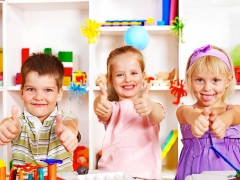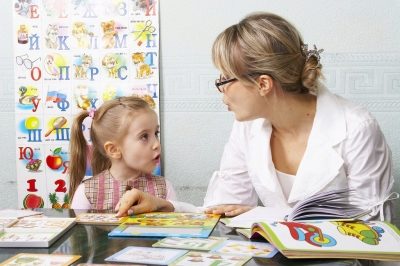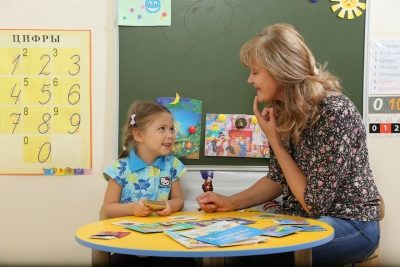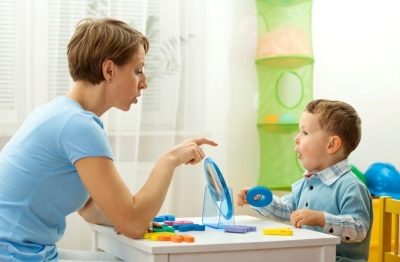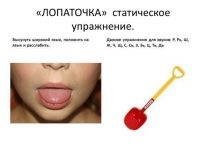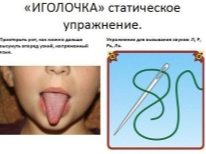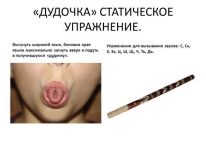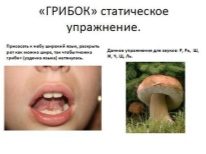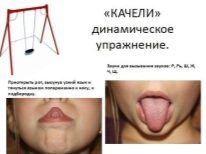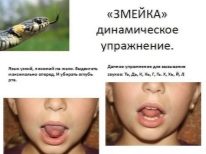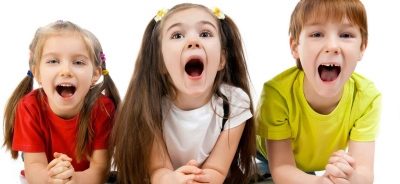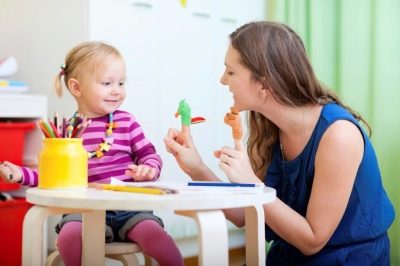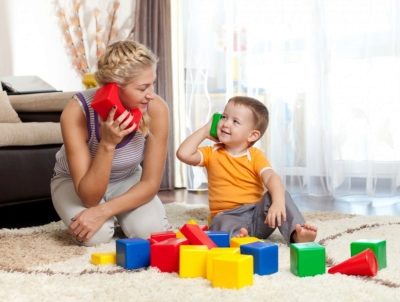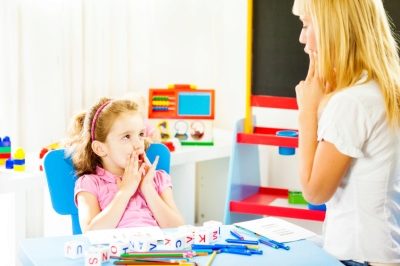Speech therapy classes for children 4-5 years
Today, many parents who care about the full development of the baby, it is known that the development of the skill of literate writing and reading contributes to the normal speech development of the child. Before the start of classes, it is necessary to conduct a survey of the baby’s speech, to find all the flaws in pronunciation.
This is the characteristic of a child of this age:
- By the age of 5, the baby must have all the sounds of speech, except for the hissing sounds and “P”, sometimes the sound “L”, which the child can still speak poorly
- The child in the lexicon must have an adequate vocabulary so that he can make a sentence of 5-7 words.
- The child should be able to use the words in the singular and plural.
- The kid should be able to describe any object, pointing to its quality.
- The ability to conduct a dialogue is another of the norms characteristic of children of a given age. When communicating with adults, his speech should be understandable, not only to parents, but also to strangers.
- The child must quickly give his first name, surname, age, the names of the parents, the nicknames of animals that live nearby.
If the child does not know how to do something of the above, it will be useful for him to attend speech therapy classes. They will be aimed at the development of fine motor skills, vocabulary enrichment, the development of air jets and, of course, the correction of violations of the sound pronunciation.
In private speech therapy centers, a speech therapist conducts consultations and classes. Moreover, his work is not cheap. But parents who have the opportunity to study at home with their baby will be able to spend this time with benefit. Especially in a homely, relaxed atmosphere, the child feels more comfortable: there is no undue stress from communicating with a stranger.
Speech therapy classes at home
Moms come to the aid of various literature.
One of the benefits that can be used at home is “Speech therapy homework for children with ONR for 5-7 years old” Teremkova N.E. These tasks can be offered to a child who has not reached the age of 5 years.
We propose to use the manuals of two more authors - this is Bardysheva T. Yu. And Monosova Ye.N. They offer caregivers and parents a large number of benefits for the development of children with 3summer age.
In order for homework to be successful, you need to follow some rules:
- All classes must be conducted in a playful way so that the child is passionate about everything that happens, and also does not understand the true meaning of the exercises.
- Classes need to be limited in time. For a start, it is 3-5 minutes, then bring to 15-20.
- The number of game lessons per day is about 2-3, so the material will be learned faster.
- Praise the child for every success, keep up the good words. Do not use the word "wrong" - the child may withdraw and no longer make contact.
- Classes are best held in hours when the child is not tired. The best time for this is after breakfast and after a nap.
- When talking to a child, turn to face him, clearly pronounce all the sounds. Remember, you are an object to follow.
- If, while performing an assignment, you get acquainted with one or other natural phenomena, it is necessary to do so at the time for which these phenomena are characteristic (in winter - study of winter phenomena, in summer - summer ones).
Homework Steps
Let's clarify the procedure for conducting classes at home:
- Finger gymnastics.
- Gymnastics for articulation organs.
- Games on onomatopoeia, development of hearing, logorhythmics.
- The development of speech, vocabulary.
Consider in order each stage of classes at home.
Gymnastics for fingers
It is known that there is a strong interrelation between the hand of man and the brain. Therefore, performing small movements with the hand, we thereby train the areas of the cerebral cortex. Well, if these movements are combined with speech, then the benefits of such exercises will be much greater.
Parents, doing finger gymnastics with their baby, should not just ask to perform any actions, but learn rather short verses, sayings and songs with the child.
Variants of exercises for fingers, there is a huge variety. In bookstores you can find a large amount of literature with whole sets of exercises on the development of motility. These publications can use any mother.
In general, a number of movements contributing to the development of fine motor skills can be distinguished:
- stroking one hand with another;
- massage of the fingers of one hand with the other hand;
- the combination of the thumb with other fingers;
- combination with each other fingers of two pens.
A huge benefit is the game with the "magic bag" in which the mother pours cereal. In each bag there can be both groats of one type, and different. Usually used buckwheat, peas, beans, rice.
The child is asked to touch with his fingers small and large inclusions. Another option is to use cereals: just mix different types in a plate and ask the baby to sort it out.
The main exercises are shown in this video:
Articulation gymnastics
These exercises are aimed at strengthening the muscles of the articulatory apparatus, the development of the amplitude of movements. Any subsequent statement of sounds is preceded by articulation exercises.
Exercises are divided into dynamic and static. When performing the first tongue, the lips perform any exercises, that is, they constantly move. When performing the second - the articulation authorities must "take" a certain position and hold it for several seconds. Such exercises are more difficult for the child; it is important to teach the child to do this.
There are different exercises that can always be done and all kids. They simply contribute to the development of the movements of all the muscles of the apparatus.
There are exercises that “prepare” those muscles that are necessary when pronouncing the sound that the child speaks ill.
Among the exercises are the following:
- on the development and strengthening of the muscles of the tongue;
- on the development and strengthening of the muscles of the lips;
- on the development and strengthening of the muscles of the cheeks;
Here are some of these exercises:
"Smile". Strongly stretch the lips in a smile, but the teeth should not be visible. Hold smile for 30 seconds.
"Fence". Smile strongly, so that the teeth are visible, keep the smile.
"We will punish the naughty tongue." Slightly open the mouth, put the tongue on the lower lip and, splashing lips over it, pronounce “five-five-five ...”.
"Pipe". Open your mouth, stick out the tongue and try to bend its side edges upwards in the form of a tube, hold it in this position for 30 seconds.
"Lick the jam." Slowly, without tearing off the tongue, first lick the upper lip from the corner to the corner, then repeat the procedure with the lower lip.
"Watch - tick-tick." Make a smile, open your mouth, then with the tip of your tongue alternately touch the corners of your mouth.
"We clean the teeth." Smile, slightly open the mouth, then with the tip of the tongue, pressing it hard enough, brush the inside of the teeth of the lower row (7-10 times). This exercise is repeated with the teeth of the upper row (7-10 times).
"Swing". Smile and open his mouth wide. Then lower the tip of the tongue by the bottom row of teeth one at a time, and lift by two at the top two. Repeat - 4-5 times.
Doing the exercises is not easy on demand. Interest your baby. Offer him a trip to a magical country, where the main character is a tongue.Dream up together, and these activities will bring many benefits to the child.
Do not forget, all the exercises on the development of organs of articulation must be performed in front of a mirror. The child should not only feel where the tongue is and what the sponges do, but also to see it all.
The main exercises are shown in the following videos.
The development of phonemic hearing
Since the child masters the speech is not in itself, but perceiving sounds from others, it is necessary that the people living nearby speak correctly.
In addition, the surrounding people at the stage of development of the child's speech can have a huge role in its formation. Many studies on the development of hearing are based on imitation.
Consider what exercises you can do with your baby at home:
- Guess which item is ringing. An adult offers the child to consider objects that can make a sound. Shows how they ring. Then he hides behind the object a sound (drum, spoon, glass) and asks the child to guess what is ringing.
- Guess where the sound is. The adult behind the child moves around the room and rings the bell in different places. The child must hand show the place in which he hears the ringing.
- An imitation of the sounds that animals make. To perform this exercise, it is desirable to use narrative and subject pictures. You can consider the little animals, discuss how and where it lives. And pronounce the sound that it makes. (Frog, bee, cat, etc.)
- Imitation of domestic sounds. Exercise is based on the repetition of sounds that we hear from different objects. (water dripping: CAP-CAP, train rides: TU-TU, etc.)
A large role in the development of hearing and sense of rhythm play logorhythmic exercises. These are exercises that combine movement, speech and music. This type of activity is very popular with the child. An adult shows the movement of the child and utters the words, all this is done under competently selected music. The main thing is to prepare in advance. After all, how can an occupation be interesting if an adult constantly makes mistakes in words? ..
Speech development
Work on the development of the child's speech includes two areas:
- Vocabulary work, where the child clarifies the idea of the world around objects and phenomena, the relationship of people.
- The development of the grammatical structure of the language - the child learns to use the words in the correct form, competently make sentences.
Dictionary work solves the following tasks:
- clarification of the understanding of the words in the child's lexicon;
- enrichment of the lexicon with new words;
- the formation of skills to use new words in independent speech.
The child develops the world around him, and in order for this work to be interesting and useful for him, it is necessary to use building kits, toys, children's books, subject and subject pictures.
I would like to recommend for use at home classes on the development of speech demonstration material developed by the authors Olga Gromova and Galina Solomatina. It is presented with pictures with clear and vivid illustrations that will be understandable and interesting for children.
Do not forget, when working with a picture, you must put the question correctly so that the kid can find words to indicate the quality of the subject.
It is important to understand that this word may not be used in speech. To this end, new words must be repeated in combination with other familiar words. For example, when reading Surikov’s “Winter” verse, the child is offered to think about what else can be called the word “fluffy”: a kitten, a towel. Repeating it in combination with familiar words, the child begins to use it in independent speech.
The material with which you will work, must correspond to the age of the child. For a 4-year-old there may be fairy tales “Ryaba Chicken”, “Kolobok” and others. The tale encourages sympathy for all good, it is necessary for the development of speech, and for moral education.
Reading fairy tales should be accompanied by the display of vivid illustrations. Well back up read beautiful cartoon.This will deepen the impression of a fairy tale.
At the age of five years, the child can be offered to compare the signs of objects, summarize (vegetables, fruits), make up sentences based on words (girl, forest, basket). Consolidation of material occurs in didactic games, proverbs and tongue twisters have a great help in this.
Here is a sample list of topics that are offered to the child: "Parts of the human body", "Clothing", "Seasons", "Vegetables, fruits and berries", "House and its parts", "Furniture", "Animals", "Transport" and others.
The development of the grammatical structure of speech occurs with the enrichment and activation of the dictionary, the formation of coherent speech. Most often, children have errors in changing nouns in cases and in numbers (no boots, pencils, kittens, and goslings). These difficulties and need to pay attention when conducting individual classes with the child.
Here are some types of exercises that are conducted with a child: “One is many” (hand-to-hand), “What will I show?” (Flowers, lamp) “To whom - what? (a dog’s bone), “Who eats what?” (a cow — grass), “Call it sweet” (a cat is a cat, a ring is a ringlet), “Split a word into two” (a plane flies itself) ? ”(Apple is round, sweet),“ Whose part is it? ”(Fox’s tail has a fox tail),“ Yesterday is now ”(yesterday I went to the park, now I play with a doll) and others.
Today, on the shelves of stores you can find a large amount of literature in which exercises and activities for the development of a coherent speech of a baby are described in detail, which can be used at home.
Do not forget, the child grows and very soon will go to the first class. And on how his speech will be formed, depends on the success of schooling. The period from 4 to 7 years is the most favorable for the development and correction of speech.
At this stage of development, devote as much time as possible to your child and you, thereby laying a strong foundation for the future success of the child.
An example of speech therapy classes you can see in the next video.
